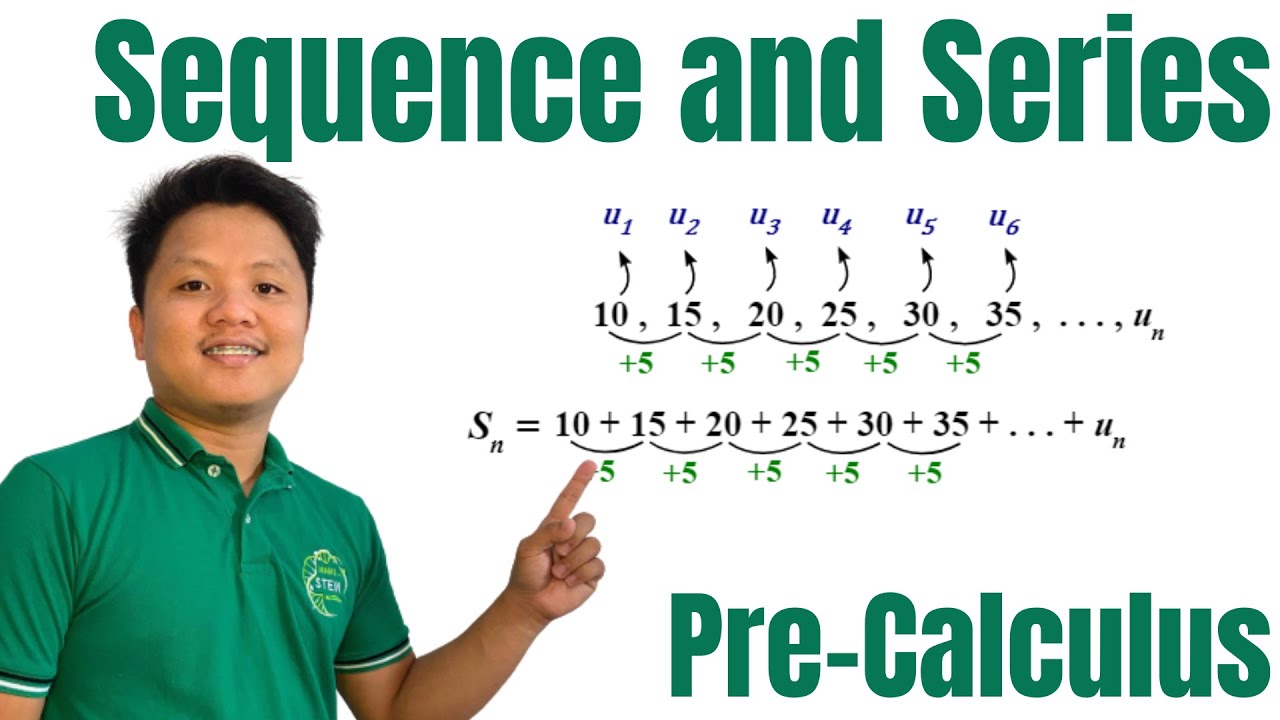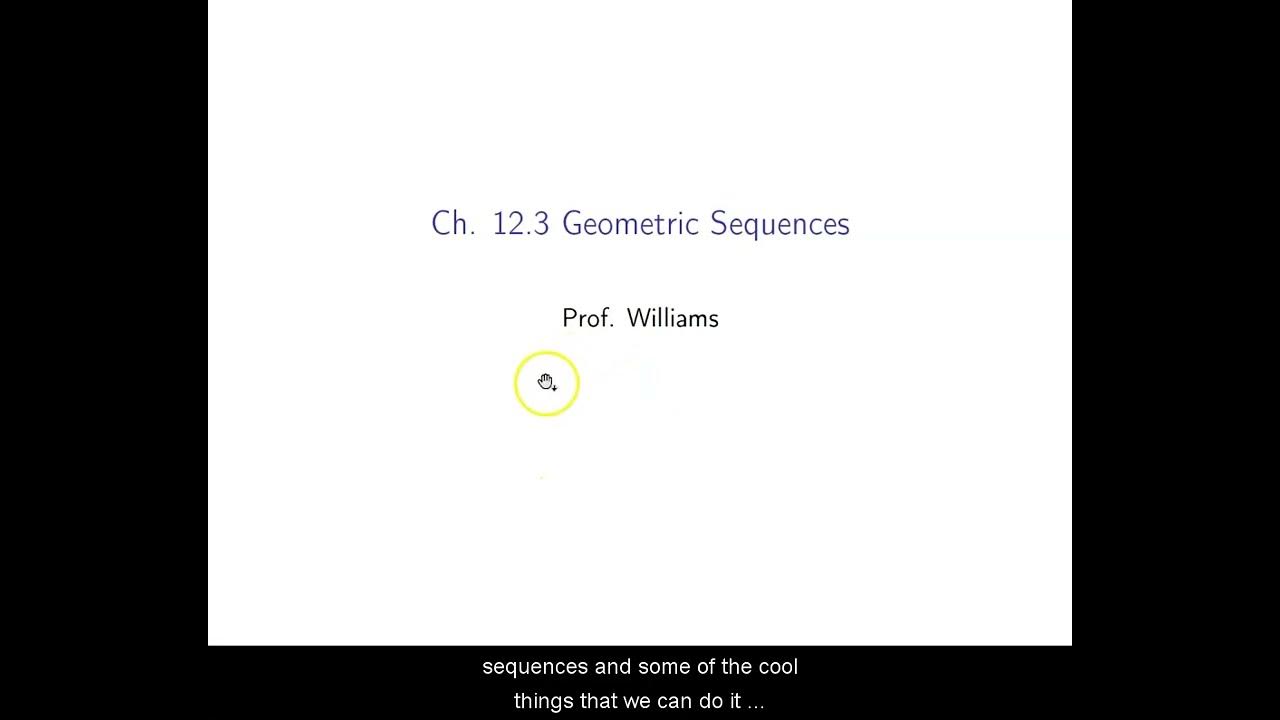Math Antics - Number Patterns
TLDRIn this Math Antics video, Rob introduces viewers to the concept of number patterns and sequences in mathematics. He explains the difference between a sequence, where order matters, and a set, where it doesn't. Rob illustrates finite and infinite sequences, and how they can be repeating or non-repeating. He demonstrates how sequences can be generated using addition, subtraction, multiplication, and division, highlighting the distinct characteristics of arithmetic and geometric sequences. The video concludes with practical tips for identifying sequences based on simple arithmetic rules, emphasizing the importance of practice in mastering mathematical concepts.
Takeaways
- 🧩 Math is not just about calculations; it also involves recognizing number patterns.
- 🔄 A sequence in math is an ordered list where the position of elements matters, unlike a set where order and repetition do not.
- 🔢 Sequences can be finite, having a limited number of elements, or infinite, continuing indefinitely without end.
- 🔁 Some sequences repeat a specific pattern, while others are non-repeating and each element is unique.
- 📈 Arithmetic sequences follow a rule of adding or subtracting a constant value to generate each term.
- 📉 Geometric sequences are created by multiplying or dividing each term by a constant ratio.
- 🔢 Infinite sequences, such as counting numbers, can be represented with an ellipsis (...) to indicate their endless nature.
- 📚 Sets are groups of numbers or elements where order doesn't matter and duplicates are not counted.
- 🤔 To determine the rule of a sequence, look for a common difference in increasing or decreasing sequences, or a common ratio in sequences that grow or shrink exponentially.
- 📉 The difference between arithmetic and geometric sequences lies in whether they are generated by addition/subtraction or multiplication/division rules.
- 📈 Practice is key to mastering the understanding of number sequences and patterns in mathematics.
Q & A
What is the primary focus of Math Antics?
-Math Antics focuses on explaining various mathematical concepts in an engaging way, with a particular emphasis on number patterns and sequences in the provided script.
Why is the concept of 'pattern' important in mathematics?
-The concept of 'pattern' is important in mathematics because it involves recognizing and working with sequences and sets, which are fundamental to understanding more complex mathematical structures and solving problems.
What is a 'Sequence' in mathematics?
-A 'Sequence' in mathematics is a set of numbers or elements where the order matters. It can be finite, with a limited number of elements, or infinite, continuing indefinitely.
How does a 'Set' differ from a 'Sequence'?
-A 'Set' refers to a group of numbers or elements where the order does not matter and duplicates are not counted. In contrast, a 'Sequence' emphasizes the order of elements and can include duplicates.
What are the two types of sequences mentioned in the script?
-The two types of sequences mentioned are 'repeating' sequences, which have a pattern that recurs, and 'non-repeating' sequences, which do not have a recurring pattern.
What is a common characteristic of 'Arithmetic Sequences'?
-Arithmetic Sequences are characterized by a common difference between consecutive terms. They can be identified by adding or subtracting a constant amount to each term.
What is a common characteristic of 'Geometric Sequences'?
-Geometric Sequences are characterized by a common ratio between consecutive terms. They can be identified by multiplying or dividing each term by a constant factor.
How can you determine if a sequence is increasing or decreasing?
-A sequence is increasing if each new element is larger than the previous one, and it is decreasing if each new element is smaller. This can indicate whether the sequence might be based on addition/multiplication (increasing) or subtraction/division (decreasing) rules.
What is the significance of the three dots (...) in representing sequences?
-The three dots (...) in a sequence represent that the pattern continues indefinitely. It is a notation used to denote infinite sequences where the pattern goes on forever.
How can you identify the rule governing a sequence?
-To identify the rule governing a sequence, you can look for a common difference between consecutive terms (for arithmetic sequences) or a common ratio obtained by dividing consecutive terms (for geometric sequences).
What are some examples of infinite, non-repeating sequences mentioned in the script?
-Examples of infinite, non-repeating sequences mentioned in the script include the sequence of odd numbers (1, 3, 5, 7, 9, ...) and the sequence of even numbers (2, 4, 6, 8, 10, ...).
Outlines
🧩 Introduction to Number Patterns and Sequences
Rob introduces the concept of number patterns in mathematics, explaining that while math is often associated with calculations, it also involves recognizing patterns. He uses the analogy of a repeating animal pattern to illustrate how sequences work, emphasizing that the order of elements in a sequence matters. He introduces the terms 'sequence' and 'set,' explaining that sequences can be finite or infinite and may repeat. The notation for representing sets and sequences is also discussed, along with the concept of infinite sequences denoted by three dots. The paragraph concludes with examples of repeating and non-repeating finite and infinite sequences, and the sets they contain.
📚 Understanding Rules in Number Sequences
This paragraph delves into how sequences can be generated by following specific rules, such as counting and skip counting, which are essentially arithmetic operations applied sequentially. It explains that sequences can be formed by adding, subtracting, multiplying, or dividing a number by a constant, resulting in different types of sequences like arithmetic and geometric sequences. The paragraph illustrates how these operations lead to different rates of increase or decrease in the sequence values. It also introduces the terms 'common difference' and 'common ratio' as indicators of whether a sequence is arithmetic or geometric, respectively. The importance of recognizing these patterns and rules in understanding and predicting sequences is highlighted.
🔍 Identifying Sequence Rules and Types
The final paragraph provides guidance on how to analyze and identify the rules governing different sequences. It suggests starting by determining if a sequence is repeating or non-repeating, as this affects the method of analysis. For non-repeating sequences, one should check if the sequence is increasing or decreasing to infer if it's based on addition/multiplication or subtraction/division rules. The paragraph explains how to find a common difference by subtracting adjacent numbers and a common ratio by dividing them to identify arithmetic and geometric sequences, respectively. It concludes with an encouragement to practice and a reminder of the importance of understanding sequences in mathematics.
Mindmap
Keywords
💡Arithmetic
💡Pattern
💡Sequence
💡Set
💡Finite
💡Infinite
💡Rule
💡Arithmetic Sequence
💡Geometric Sequence
💡Common Difference
💡Common Ratio
Highlights
Math is not only about calculations but also about recognizing number patterns.
A 'pattern' in math refers to repeating sequences of numbers or elements, unlike in fashion.
The importance of the order in sequences, as changing it results in a different pattern.
Definition of a 'Sequence': an ordered set of numbers or elements.
A 'Set' in math is a group of unique numbers or elements where order doesn't matter.
Notation for sets and sequences includes curly braces with elements separated by commas.
Sequences can be either finite with a limited number of elements or infinite without end.
Infinite sequences are denoted with three dots to indicate their endless nature.
Even infinite sequences can have a finite set of elements if they repeat.
Examples of non-repeating infinite sequences include counting and skip-counting patterns.
Sequences can be generated by following arithmetic rules such as addition or subtraction.
Multiplication and division rules create 'Geometric Sequences' with faster growth or decline.
Arithmetic sequences involve a constant change between elements, either addition or subtraction.
Geometric sequences involve a constant factor of multiplication or division between elements.
Identifying 'common difference' or 'common ratio' helps determine the rule behind a sequence.
Differentiating between 'Arithmetic Sequences' and 'Geometric Sequences' based on their rules.
Practical tips for analyzing sequences to understand if they follow basic arithmetic operations.
The video concludes with an encouragement to practice math for better understanding.
Transcripts
Browse More Related Video

Explicit and recursive definitions of sequences | Precalculus | Khan Academy

ILLUSTRATING SEQUENCES AND SERIES || PRECALCULUS

Arithmetic Sequences (Precalculus - College Algebra 69)

Geometric Sequences (Precalculus - College Algebra 71)

Sequence and Series | Terms of Sequence and Associated Series | Pre-Calculus

Ch. 12.3 Geometric Sequences
5.0 / 5 (0 votes)
Thanks for rating: